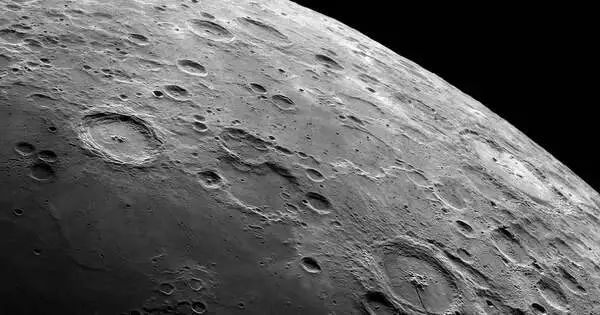A team of Chinese researchers say they managed to convert actual lunar regolith samples into a source of rocket fuel and oxygen — a potential game-changer for future space explorers hoping to make use of in-situ resources to fuel up for their return journey. The lunar soil samples, the researchers discovered, can act as a catalyst to convert carbon dioxide and water from astronauts’ bodies and environments into methane and oxygen.
Scientists from China report in the journal Joule on that soil on the moon contains active compounds that can convert carbon dioxide into oxygen and fuels. They are now exploring whether lunar resources can be used to facilitate human exploration on the moon or beyond.
Nanjing University material scientists Yingfang Yao and Zhigang Zou hope to design a system that takes advantage of lunar soil and solar radiation, the two most abundant resources on the moon. After analyzing the lunar soil brought back by China’s Chang’e 5 spacecraft, their team found the sample contains compounds – including iron-rich and titanium-rich substances – that could work as a catalyst to make desired products such as oxygen using sunlight and carbon dioxide.
We use in-situ environmental resources to minimize rocket payload, and our strategy provides a scenario for a sustainable and affordable extraterrestrial living environment.
Yingfang Yao
Based on their findings, the researchers proposed a “extraterrestrial photosynthesis” strategy. The system primarily employs lunar soil to electrolyze water extracted from the moon as well as water in astronauts’ breathing exhaust into oxygen and hydrogen-powered by sunlight. During a hydrogenation process catalyzed by lunar soil, carbon dioxide exhaled by moon inhabitants is also collected and combined with hydrogen from water electrolysis.
The process produces hydrocarbons like methane, which can be used as fuel. According to the researchers, the strategy uses only sunlight to produce a variety of desirable products such as water, oxygen, and fuel that could support life on a moonbase. The team is looking for a chance to test the system in space, most likely as part of China’s future crewed lunar missions.

“We use in-situ environmental resources to minimize rocket payload, and our strategy provides a scenario for a sustainable and affordable extraterrestrial living environment,” Yao says.
While the catalytic efficiency of lunar soil is less than catalysts available on Earth, Yao says the team is testing different approaches to improve the design, such as melting the lunar soil into a nanostructured high-entropy material, which is a better catalyst.
Previously, scientists proposed a variety of extraterrestrial survival strategies. However, most designs necessitate the use of terrestrial energy sources. For example, NASA’s Perseverance Mars rover carried an instrument that can convert carbon dioxide in the planet’s atmosphere to oxygen, but it is powered by an onboard nuclear battery.
“We will see the crewed spaceflight industry develop rapidly in the near future,” says Yao. “We will enter a ‘Age of Space,’ similar to the ‘Age of Sail’ in the 1600s, when hundreds of ships set sail for the sea. However, if we want to conduct a large-scale exploration of the extraterrestrial world, we will need to consider ways to reduce payload, which means relying on as few supplies from Earth as possible and instead relying on extraterrestrial resources.”
















